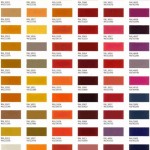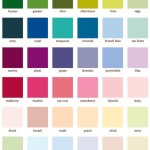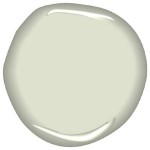Colors To Paint Living Room With Brown Furniture
Selecting the right paint color for a living room furnished with brown furniture involves careful consideration of several factors. Brown, being a neutral color, offers a versatile foundation but also requires strategic color pairings to avoid a monotonous or aesthetically unappealing space. The goal is to choose a paint color that complements the brown tones, enhances the room's ambiance, and reflects the owner's style preferences.
The specific shade of brown in the furniture is a crucial starting point. Is it a dark, rich chocolate brown? A lighter, warmer tan? Or a cool, grayish brown? Each variation requires a different approach to paint color selection. The undertones of the brown furniture – whether warm, cool, or neutral – will also influence which paint colors will harmonize effectively. Failing to consider these nuances can result in a clash of colors and an unbalanced visual effect.
Beyond the furniture's specific shade, the room's natural lighting plays a significant role. A room flooded with natural light can handle bolder, darker colors, while a dimly lit room benefits from lighter, brighter shades that reflect and amplify any available light. Artificial lighting also matters; warm-toned light bulbs can alter the appearance of paint colors, making them appear warmer, while cool-toned bulbs can give them a cooler cast. It is essential to test paint samples under both natural and artificial lighting before committing to a final choice.
The desired mood and aesthetic of the living room should also guide the color selection process. A calming, serene atmosphere might call for soft, muted tones, while a more vibrant, energetic space could benefit from brighter, bolder hues. The overall style of the room, whether traditional, modern, minimalist, or eclectic, should also be taken into account. The paint color should seamlessly integrate with the existing décor and contribute to the overarching design scheme.
Understanding Color Theory Basics
A fundamental understanding of color theory is invaluable when choosing paint colors. The color wheel, comprised of primary, secondary, and tertiary colors, provides a framework for understanding color relationships. Complementary colors, which sit opposite each other on the color wheel (e.g., blue and orange, red and green), create a high-contrast, dynamic effect. Analogous colors, which sit next to each other on the color wheel (e.g., blue, blue-green, and green), create a harmonious, cohesive effect. Monochromatic color schemes, which use different shades and tints of a single color, offer a subtle, sophisticated look.
When working with brown furniture, consider its position on the color wheel. Brown is essentially a dark shade of orange, often with yellow or red undertones. Therefore, colors that complement or harmonize with orange, yellow, and red are generally good starting points. However, the specific shade and undertones of the brown furniture will further refine the options.
Beyond the basic color relationships, understanding color temperature is also important. Warm colors (reds, oranges, yellows) tend to evoke feelings of energy, warmth, and excitement, while cool colors (blues, greens, purples) tend to create a sense of calm, peace, and serenity. Brown, being a warm neutral, pairs well with both warm and cool colors, depending on the desired effect. To create a cozy and inviting space, warm colors can be used to complement the brown furniture. To create a more balanced and refreshing space, cool colors can be incorporated.
Finally, consider the value and saturation of the colors. Value refers to the lightness or darkness of a color, while saturation refers to its intensity or purity. High-value colors are light and bright, while low-value colors are dark and muted. High-saturation colors are vibrant and intense, while low-saturation colors are dull and muted. The value and saturation of the paint color should be carefully considered in relation to the brown furniture. For example, if the furniture is dark brown, a lighter, higher-value paint color can create a pleasing contrast. If the furniture is light brown, a darker, lower-value paint color can provide a grounding effect.
Popular Color Combinations for Brown Furniture
Several paint colors consistently prove successful when paired with brown furniture. These options represent a range of styles and moods, catering to various aesthetic preferences. The specific shade of brown, the room's lighting, and the desired ambiance will all influence the optimal choice.
Warm Neutrals: Cream, beige, and greige (a blend of gray and beige) are classic choices that create a soft, inviting atmosphere. These warm neutrals provide a subtle backdrop that allows the brown furniture to stand out without overwhelming the space. They work particularly well in rooms with ample natural light, creating a bright and airy feel. These colors are versatile and can be easily paired with a variety of accent colors, such as blues, greens, or corals.
Cool Grays: Gray is a sophisticated and versatile neutral that can complement brown furniture in a variety of ways. A cool, light gray can create a calming and contemporary feel, while a darker, charcoal gray can add drama and depth. Gray works particularly well with brown furniture that has cool undertones. To prevent a room from feeling too cold, consider incorporating warm accents, such as throw pillows or rugs in shades of gold, rust, or orange.
Soft Blues: Light blues, such as sky blue, powder blue, or robin's egg blue, can create a serene and refreshing atmosphere. These cool colors provide a pleasing contrast to the warmth of the brown furniture. Soft blues work particularly well in bedrooms and living rooms, creating a relaxing and inviting space. They can be paired with white trim and natural wood accents for a classic and timeless look.
Earthy Greens: Green, being the color of nature, evokes feelings of tranquility, growth, and harmony. Earthy greens, such as sage, olive, or moss green, can create a warm and inviting atmosphere that complements brown furniture beautifully. These colors work particularly well in rooms with a natural or rustic aesthetic. They can be paired with wood accents, natural textures, and indoor plants to create a cohesive and organic look.
Accents of Color: While neutral paint colors are often the safest and most versatile choice, incorporating accents of color can add personality and vibrancy to the living room. Accent walls, painted furniture, or colorful accessories can be used to introduce pops of color without overwhelming the space. Consider using complementary colors, such as blue or green, to create a dynamic contrast with the brown furniture. Alternatively, analogous colors, such as yellow or orange, can be used to create a harmonious and cohesive look.
Testing Paint Colors and Considerations
Prior to committing to a final paint color, testing samples in the actual living room is crucial. The appearance of paint colors can vary significantly depending on the lighting, surrounding colors, and textures. Paint stores typically offer small sample sizes that can be applied directly to the wall. Paint a large enough area (at least 2 feet by 2 feet) to accurately assess the color's appearance in different lighting conditions.
Observe the paint samples throughout the day, noting how the color changes with natural light. Also, examine the samples under artificial lighting, both warm and cool toned. Consider how the paint color interacts with the brown furniture, the flooring, and any existing artwork or décor. Pay attention to the overall mood and ambiance that the color creates.
Consider the undertones of the paint color. Many colors have subtle undertones that can affect their overall appearance. For example, a gray paint might have blue, green, or purple undertones. These undertones can either complement or clash with the brown furniture. To identify the undertones, compare the paint sample to other similar colors. Alternatively, holding a white piece of paper next to the sample can help to reveal the underlying hues.
Take into account the sheen of the paint. Paint sheen refers to the amount of light that is reflected from the surface. Different sheens have different properties and are suitable for different applications. Flat or matte sheens are non-reflective and provide a soft, velvety finish. They are ideal for concealing imperfections on walls but are less durable and more difficult to clean. Eggshell sheens have a slight sheen and are more durable than flat sheens. They are a good choice for living rooms and bedrooms. Satin sheens have a higher sheen and are more durable than eggshell sheens. They are suitable for kitchens and bathrooms. Semi-gloss and gloss sheens are highly reflective and durable. They are typically used for trim and doors.
Finally, consider the cost of the paint. Paint prices can vary significantly depending on the brand, quality, and sheen. While it is tempting to save money by purchasing cheaper paint, it is often worth investing in higher-quality paint. Higher-quality paint typically provides better coverage, durability, and color retention. It may also require fewer coats, ultimately saving time and effort. By carefully considering these factors and testing paint samples thoroughly, informed decisions and achieve visually appealing spaces can be achieved in their living rooms.

Living Room Paint Color Ideas With Dark Brown Furniture Colors For

Ideas For Wall Colors That Go With Brown Furniture The Inside

10 Best Wall Color Ideas For Living Room With Brown Furniture Gallery Sofa

Secrets From Our Color Expert How To Style Brown Furniture The Roomplace

9 Paint Colors That Go With Brown Furniture Paintzen

Ideas For Wall Colors That Go With Brown Furniture The Inside

What Wall Colors Go With Brown Furniture Ideas Images Gallery

Living Room Paint Color Ideas With Brown Furniture Wohimmer Farbschema Braune Couch Dekoration Ideen Wohnung

Ideas For Wall Colors That Go With Brown Furniture The Inside

9 Paint Colors That Go With Brown Furniture Paintzen
Related Posts








